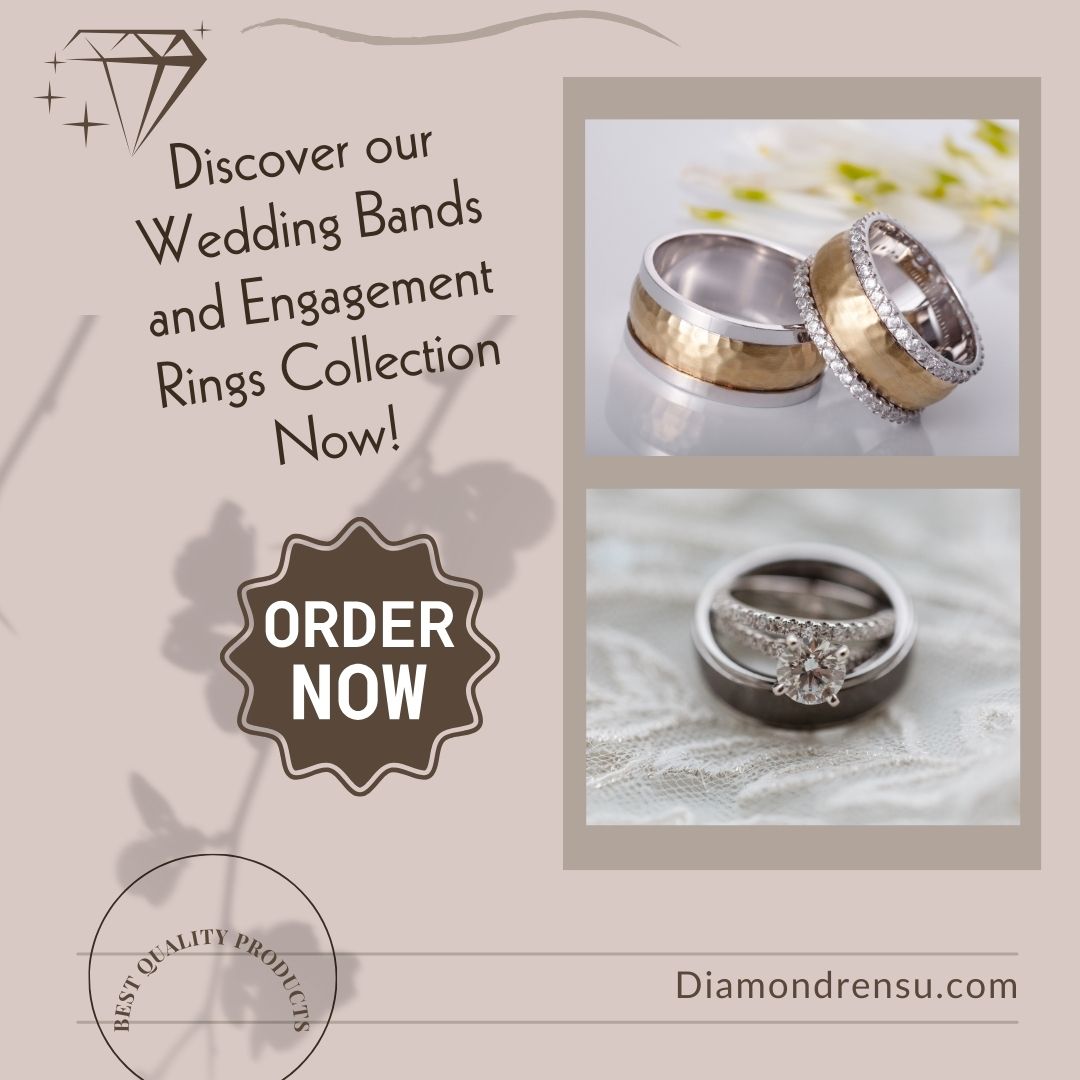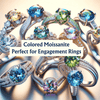
What Does TW Mean in Jewelry? Understanding Total Carat Weight
In the world of jewelry, understanding industry terminology is crucial for both buyers and sellers. Among the various terms, 'TW' stands out as a significant marker of a jewelry piece's value and quality. This abbreviation stands for 'total weight' and is used to denote the combined weight of all the gemstones, typically diamonds, in a piece of jewelry.
We often see this term alongside other abbreviations, such as 'CTW', which means 'carat total weight'. These terms convey important information about a piece's gemstone content, with carats being a unit of weight for diamonds and other gemstones. The weight of a diamond plays a substantial role in determining its value; however, it's not the sole factor. It's essential for us to remember that the cut, color, clarity, and carat weight—the four Cs—all interact to define the overall quality and worth of diamond jewelry.
Understanding Jewelry Terminology
In the world of fine jewelry, various terms and abbreviations are used to denote the qualities and characteristics of pieces. We'll examine the specifics of these terms, focusing on the meaning of TW, as well as the difference between carat and karat, and some common abbreviations you’ll encounter.
Definition of TW in Jewelry
TW, or Total Weight, refers to the combined weight of all the gemstones used in a piece of jewelry. It's critical to understand that when jewelers mention TW, it encompasses the sum of all diamonds or other gemstones in the item, whether that's in a ring, earrings, or a bracelet. This is distinctly different from the weight of a single stone.
Carat and Karat Explained
Carat and karat are two terms that often confuse consumers because they sound the same but denote different things:
- Carat (with a "c") is a unit of weight for gemstones and is equivalent to 200 milligrams. When you see CTW (Carat Total Weight), it's talking about the total mass of all gemstones in the piece.
- Karat (with a "k"), on the other hand, is a measure of the purity of gold. Pure gold is 24 karats, so a piece of jewelry marked as 18 karats means it is 18 parts gold and 6 parts alloy.
Common Abbreviations in Jewelry
In our journey through jewelry terms, we frequently come across various abbreviations besides TW. Here is a brief list:
- CT - Carat (weight of a single diamond)
- G or GM - Gram (a measure of weight)
- PT or PLAT - Platinum (the metal)
- GIA - Gemological Institute of America (a certifying body)
Remember, understanding these abbreviations will enrich your knowledge and confidence when discussing or buying jewelry.
Diamonds and Gemstones

When we consider fine jewelry, understanding the weight and the quality of diamonds and gemstones is crucial. These characteristics directly influence a piece's value and beauty.
Measuring Gem Weight
To ensure accuracy in trading, gemstones are measured by weight, typically in carats (ct). One carat is equivalent to 0.2 grams. When multiple gemstones are used in a jewelry piece, we often refer to the total weight of all stones as the total carat weight (CT TW) or simply total weight (TW).
Diamond Weight vs. Total Carat Weight
The weight of a single diamond is expressed in carats, with precision to the hundredths of a carat. In contrast, total carat weight accounts for the combined weight of all diamonds in a jewelry piece. This is particularly important when assessing pieces with multiple diamonds, as the diamond weight can be distinguished from the total carat weight, which includes all gems.
Color, Cut, Clarity, and Carat Weight - The 4 Cs
We assess diamonds based on the 4 Cs: Color, Cut, Clarity, and Carat Weight.
- Color: A diamond's color is graded from D (colorless) to Z (light yellow or brown). Colorless diamonds are usually more desirable.
- Cut: The cut of a diamond refers to its proportions, symmetry, and polish. A well-cut diamond will have better brilliance and light reflection.
- Clarity: Clarity grades assess the size, number, and location of internal features, known as inclusions, and surface defects, known as blemishes.
- Carat Weight: We've already noted how critical carat weight is, defining the size and contributing significantly to the diamond's value.
Together, the 4 Cs help us determine the quality of diamonds and are a reliable method for comparing one gemstone to another.
Jewelry Design and Components

In our exploration of jewelry, we recognize that each component, from the prominent center stone to the intricate design elements and smaller stones, plays a pivotal role in the piece's overall aesthetic and function.
Role of the Center Stone
In many pieces, especially rings, the center stone serves as the focal point of the design. Its size, cut, and quality are key factors in the visual impact of the piece. For an engagement ring, the center stone is often a larger diamond, reflecting not only personal taste but also traditional significance. For instance, a solitaire design spotlights a single diamond, while a halo setting surrounds the center stone with a circle of smaller stones to enhance its appearance.
Design Elements in Jewelry
The design of a jewelry piece is a reflection of both the wearer's style and the craftsmanship of its creator. Design elements can range from the minimalistic elegance of a solitaire ring to the detailed complexity of a vintage-inspired piece. Metalwork, including the setting and band style, complements the stones and contributes to the ring's overall design narrative. In our designs, the artistry involved in positioning each stone and sculpting the metal is given as much attention as the quality of the gemstones themselves.
Importance of Smaller Stones
Smaller stones, or side stones, add depth and complexity to a jewelry piece. They may be used to accentuate the center stone or to create a unique pattern within the design. Their strategic placement can significantly influence the appearance and visual impact of the piece. Smaller stones are not merely decorative; they can also enhance the perceived size and brilliance of the center stone, contributing to the full expression of the design.
Jewelry Weight and Value

We recognize that understanding the weight of jewelry and its corresponding value is crucial. The term "total weight" refers to the entire weight of the gemstones in a piece. In diamonds, this encompasses the combined carat weight of all stones present.
How Weight Influences Value
In the jewelry industry, diamonds are valued on a per carat basis. Thus, the total weight (TW) is a determining factor in assessing a piece's value. The carat weight (CTTW) is a measurement of a diamond's mass, with one carat being equivalent to 200 milligrams. When multiple diamonds are set in a single item, such as a bracelet or a ring, their combined weight significantly impacts the overall value. Here’s a straightforward list that illustrates how weight is categorized:
- Diamonds:
- < 0.50 CT TW: Considered to have a lower total weight.
- 0.50-1.00 CT TW: Medium total weight range.
- > 1.00 CT TW: Higher and more valuable total weight.
Evaluating Weight for Different Jewelry Types
Appraising weight differs across jewelry types:
- For rings with multiple diamonds, TW refers to the combined weight of all the stones.
- In earrings, TW includes the total weight of the stones in both earrings together.
- When evaluating pieces that combine precious metals and gemstones, such as gold and diamonds, each component's weight is measured separately.
Measurement accuracy is paramount in our assessment. The TW and CTTW are calculated with precision, since even slight discrepancies can lead to substantial differences in value.
Metal Types and Purity

In examining jewelry, we assess both the type of metal used and its level of purity. These factors are crucial in determining the value and quality of a piece. Below, we delve into the specifics of gold purity and compare common metals used in jewelry.
Gold Purity and Karats
Gold purity is measured in karats, with 24k gold representing 100% purity. It is the most malleable and less prone to tarnish but also the softest, making it less ideal for jewelry that must endure daily wear. The karat system grades the purity of gold by its fraction of 24 parts. For instance:
- 18k gold consists of 18 parts gold and 6 parts other metals, making it 75% pure.
- 14k gold contains 14 parts gold, equating to 58.3% purity.
Understanding the karat system helps us determine the value and durability of gold jewelry.
Comparing Metals in Jewelry
Jewelry often uses various metals, each with unique properties and purities. Sterling silver (SS), for example, contains 92.5% silver, with the remainder typically being copper. Here's a basic comparison of some common metals:
- Gold: High malleability, does not tarnish, and has a distinct yellow hue.
- Sterling Silver (SS): Known for its luster and better affordability, but prone to tarnishing.
- Gold Electroplate (GE): A thin layer of gold over a base metal, offering a gold appearance at a lower cost.
When comparing metals in jewelry, we look at factors such as color, weight, resistance to tarnish, and the presence of any skin irritants. Each metal brings its unique blend of attributes to a piece of jewelry, contributing to its overall aesthetic and durability.
Jewelry Shopping Guide
💍 Check for Hallmarks
Look for hallmarks such as "14K" or "18K" indicating the gold purity. Ensure the hallmark is accompanied by a manufacturer's trademark.
🔍 Examine for Quality
Inspect the jewelry for any signs of wear or damage. Ensure clasps and settings are secure and stones are well-set.
💰 Compare Prices
Compare prices from different retailers to ensure you're getting a fair deal. Be wary of prices that seem too good to be true.
🛍️ Shop from Reputable Sellers
Buy from reputable jewelers or established brands known for their quality and craftsmanship. Check reviews and ratings.
When shopping for jewelry, we must understand the details on jewelry tags and take steps to ensure the quality and authenticity of our purchases.
Understanding Jewelry Tags
In jewelry shopping, it's important we recognize what the tags represent. TW stands for Total Weight, which is particularly relevant when buying diamonds. This weight often includes all the stones in a piece, offering us a better understanding of what we're paying for. When we see CTW (Carat Total Weight) on a tag, this signifies the combined weight of all diamonds in the piece.
Example of a Jewelry Tag:
| Element | Meaning |
|---|---|
| TW | Total Weight of all diamonds in the piece |
| CTW | Carat Total Weight of all diamonds |
| DTW | Diamond Total Weight |
Knowing these terms allows us to make informed decisions and compare similar pieces effectively.
Ensuring Quality and Authenticity
As we browse a jewelry store, we must verify the credibility of both the jewels and the jewelers. Certifications from reputable organizations such as the Gemological Institute of America (GIA) or the American Gem Society (AGS) can confirm the quality of diamonds and gemstones. It's also wise to ask jewelers for detailed information about the Origin, Cut, Clarity, Color, and Carat Weight—often referred to as the 5 Cs.
Steps to Ensure Authenticity:
- Request a certificate of authenticity or grading report.
- Inspect for a hallmark signifying purity of precious metals.
- Inquire about the store’s return policy and warranty.
- Consider insurance options for high-value pieces.
By being attentive to these details, we enhance our jewelry shopping experience and ensure that our investments are sound.
Global Jewelry Standards

In this section, we'll explore the intricacies of diamond grading and certification, as well as the regional differences that exist within jewelry making. These standards provide a blueprint for evaluating quality and purity across diverse markets.
Diamond Grading and Certification
When assessing diamonds, we adhere to rigorous standards that evaluate characteristics such as carat weight, cut, color, and clarity. The process of diamond grading ensures that each stone is carefully examined and categorized according to these universal criteria:
- Carat Weight: The mass of the diamond measured in carats.
- Cut: The angles and finish of a diamond which affect its symmetry, brightness, and overall appearance.
- Color: Graded on a scale from D (colorless) to Z (light color).
- Clarity: The absence of inclusions and blemishes, ranging from FL (Flawless) to I3 (Included).
Certification bodies like the GIA (Gemological Institute of America) and the AGS (American Gem Society) are respected for their precise and consistent grading systems. These institutions provide credible certifications that are recognized globally, ensuring a diamond's quality and authenticity are verifiable.
Regional Differences in Jewelry Making
Jewelry making techniques and standards can vary significantly around the world. In Europe, a long history of craftsmanship and luxury can be seen in the fine detailing and innovative designs that prioritize not just the quality of the gemstones, but also the artistry of the piece.
In contrast, Asia often showcases a preference for intricate patterns and vibrant colors, where jewelry is frequently integrated into cultural traditions and aesthetic values. These regional nuances contribute to the global tapestry of jewelry standards:
- Europe: Emphasis on design, quality of material, and traditional techniques.
- Asia: Focus on symbolic significance, colorfulness, and artisanal craftsmanship.
Each region may also have its own hallmarking system to identify the purity of the metal, an additional layer of standardization that informs consumers about the quality of their purchases.
Frequently Asked Questions
When shopping for diamond jewelry, understanding terminology is key to making informed purchases. Here, we address common inquiries regarding the abbreviation 'TW' and its implications for diamond value and weight calculations.
What does the abbreviation 'TW' signify when purchasing a diamond ring?
'TW' stands for Total Weight, which refers to the combined carat weight of all diamonds or gemstones set in a piece of jewelry, such as a diamond ring.
How is the total weight (TW) of diamonds calculated in a bracelet?
For a bracelet, the Total Weight (TW) is the sum of the carat weights of all the diamonds included in the bracelet.
In terms of diamonds, what is the difference between CT and TW?
CT refers to the Carat, which is the unit of weight for a single diamond. TW, or Total Weight, combines the carat weights of all diamonds or gemstones in a piece of jewelry.
What is the value estimation process for a 1 CT TW diamond?
To estimate the value of a 1 CT TW diamond piece, we consider not only the combined carat weight but also the cut, color, clarity, and setting of the diamonds involved.
Can you explain the meaning of '1/2 CT TW' on a diamond's label?
'1/2 CT TW' implies that the total carat weight of all the diamonds or gemstones in the piece is half a carat (0.50 carats).
How does '1/10 CT TW' describe the diamond content in a piece of jewelry?
'1/10 CT TW' indicates that the summation of the carat weights of all the diamonds or gemstones in the jewelry equals one-tenth of a carat (0.10 carats).
Checkout some of our top collections:
Leave a comment
Please note, comments must be approved before they are published.









